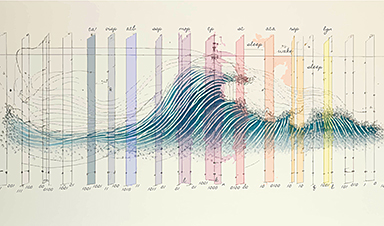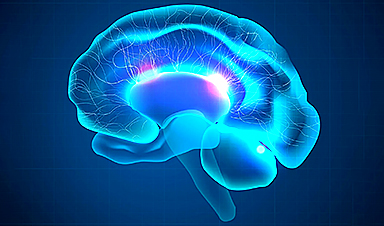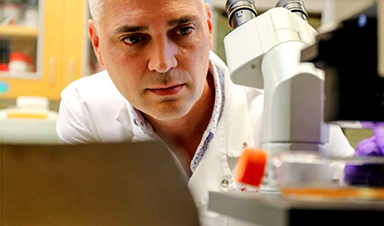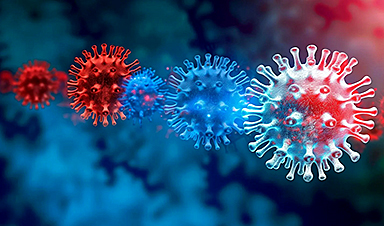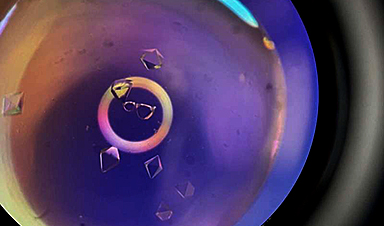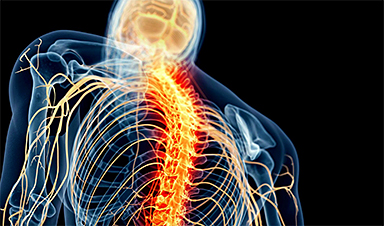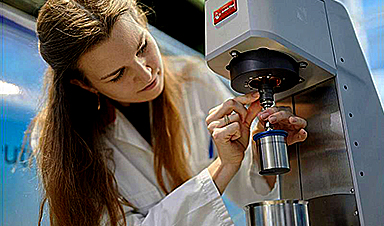Autopsy results from 44 people who died with COVID-19 show how the virus spreads through not just the respiratory system, but the entire body, including the brain, persisting for months in some patients.
A description of the results, published in the peer-reviewed journal Nature in December, highlights how far-reaching the burden of infection can be, with viral fragments found in 79 of 85 locations in the body across the 44 patients.
The small study forms “the most comprehensive analysis to date of the cellular tropism, quantification and persistence of SARS-CoV-2 across the human body, including the brain,” according to its authors.
The virus was able to spread to multiple organs and systems even in patients who died within a week of feeling their first symptoms, researchers found.
The 44 people whose autopsies contributed to this research were all unvaccinated individuals who had died with COVID-19. The median age of the individuals was 62.5 years, and 61.4 per cent had three or more comorbidities. The median span of time between the onset of symptoms and the patient being hospitalized was six days, with 18.5 days being the median interval between symptom onset and death.
Across the board, the autopsies showed that the virus was able to penetrate into numerous systems of the body, although researchers noted there was a significantly higher burden of SARS-CoV-2 RNA found in respiratory tissues. Researchers found the virus had invaded more than 35 cell types and membranes across different systems in the body.
Out of the 44 autopsies, 11 were whole-body and brain autopsies, providing the fullest picture of the viral spread in those individuals.
Of these 11, the two with the shortest duration between symptom onset and death—four days and five days—had the highest amount of viral RNA levels in their respiratory system, with high levels also found across the cardiovascular system and optic tissue, among others.
SARS-CoV-2 was found in at least one place in the central nervous system or brain tissue in 10 out of 11 of these autopsies, including five out of six of those who died more than a month after the first onset of symptoms.
Researchers noted that although there were significant viral traces found, the actual structural tissue of the brain was largely unchanged by the virus.
The individual who had the longest duration between symptom onset and death—230 days—had been hospitalized numerous times and ultimately died of lung transplant complications, not COVID-19, but was found to be positive for COVID-19 and have viral traces in numerous parts of their body, including the respiratory system, the heart, the tissue in the eyes and the brain.
The cause of death ranged across the individuals. Thirty-eight died of COVID-19, while six died of another core issue while having COVID-19. Of those who were killed by the virus, 35 had either acute pneumonia or severe lung damage at their time of death.
Two of the patients included had only mild symptoms of COVID-19 and had died of other causes, but still were found to have SARS-CoV-2 RNA spread widely throughout their bodies, suggesting that although the bulk of the autopsies focused on severe and fatal cases, the virus can penetrate far into the body even in mild cases.
The study is limited by its small scope and its focus on unvaccinated, older individuals who died with COVID-19, meaning these results may not reflect what occurs when younger, vaccinated individuals contract the virus.
Previous autopsy research has found evidence of COVID-19 across multiple systems, but some have theorized that viral traces found outside the respiratory system could’ve been due to residual blood left in tissues or cross-contamination. Researchers say that is not the case in this new study, which confirmed SARS-CoV-2 at the cellular level.
How long the virus persisted within the tissue was another aspect researchers were interested in. They found that among those who had a longer interval between symptom onset and death, the difference between the level of virus in the respiratory and non-respiratory tissues diminished significantly. This may be because different tissues are better at fighting the virus and identifying it, researchers theorized.
“Understanding mechanisms by which SARS-CoV-2 evades immune detection is essential to guide future therapeutic approaches to facilitate viral clearance,” the authors stated.
News
The Silent Battle Within: How Your Organs Choose Between Mom and Dad’s Genes
Research reveals that selective expression of maternal or paternal X chromosomes varies by organ, driven by cellular competition. A new study published today (July 26) in Nature Genetics by the Lymphoid Development Group at the MRC [...]
Study identifies genes increasing risk of severe COVID-19
Whether or not a person becomes seriously ill with COVID-19 depends, among other things, on genetic factors. With this in mind, researchers from the University Hospital Bonn (UKB) and the University of Bonn, in [...]
Small regions of the brain can take micro-naps while the rest of the brain is awake and vice versa
Sleep and wake: They're totally distinct states of being that define the boundaries of our daily lives. For years, scientists have measured the difference between these instinctual brain processes by observing brain waves, with [...]
Redefining Consciousness: Small Regions of the Brain Can Take Micro-Naps While the Rest of the Brain Is Awake
The study broadly reveals how fast brain waves, previously overlooked, establish fundamental patterns of sleep and wakefulness. Scientists have developed a new method to analyze sleep and wake states by detecting ultra-fast neuronal activity [...]
AI Reveals Health Secrets Through Facial Temperature Mapping
Researchers have found that different facial temperatures correlate with chronic illnesses like diabetes and high blood pressure, and these can be detected using AI with thermal cameras. They highlight the potential of this technology [...]
Breakthrough in aging research: Blocking IL-11 extends lifespan and improves health in mice
In a recent study published in the journal Nature, a team of researchers used murine models and various pharmacological and genetic approaches to examine whether pro-inflammatory signaling involving interleukin (IL)-11, which activates signaling molecules such [...]
Promise for a universal influenza vaccine: Scientists validate theory using 1918 flu virus
New research led by Oregon Health & Science University reveals a promising approach to developing a universal influenza vaccine—a so-called "one and done" vaccine that confers lifetime immunity against an evolving virus. The study, [...]
New Projects Aim To Pioneer the Future of Neuroscience
One study will investigate the alterations in brain activity at the cellular level caused by psilocybin, the psychoactive substance found in “magic mushrooms.” How do neurons respond to the effects of magic mushrooms? What [...]
Decoding the Decline: Scientific Insights Into Long COVID’s Retreat
Research indicates a significant reduction in long COVID risk, largely due to vaccination and the virus’s evolution. The study analyzes data from over 441,000 veterans, showing lower rates of long COVID among vaccinated individuals compared [...]
Silicon Transformed: A Breakthrough in Laser Nanofabrication
A new method enables precise nanofabrication inside silicon using spatial light modulation and laser pulses, creating advanced nanostructures for potential use in electronics and photonics. Silicon, the cornerstone of modern electronics, photovoltaics, and photonics, [...]
Caught in the actinium: New research could help design better cancer treatments
The element actinium was first discovered at the turn of the 20th century, but even now, nearly 125 years later, researchers still don't have a good grasp on the metal's chemistry. That's because actinium [...]
Innovative Light-Controlled Drugs Could Revolutionize Neuropathic Pain Treatment
A team of researchers from the Institute for Bioengineering of Catalonia (IBEC) has developed light-activated derivatives of the anti-epileptic drug carbamazepine to treat neuropathic pain. Light can be harnessed to target drugs to specific [...]
Green Gold: Turning E-Waste Into a Treasure Trove of Rare Earth Metals
Scientists are developing a process inspired by nature that efficiently recovers europium from old fluorescent lamps. The approach could lead to the long-awaited recycling of rare earth metals. A small molecule that naturally serves [...]
Cambridge Study: AI Chatbots Have an “Empathy Gap,” and It Could Be Dangerous
A new study suggests a framework for “Child Safe AI” in response to recent incidents showing that many children perceive chatbots as quasi-human and reliable. A study has indicated that AI chatbots often exhibit [...]
Nanoparticle-based delivery system could offer treatment for diabetics with rare insulin allergy
Up to 3% of people with diabetes have an allergic reaction to insulin. A team at Forschungszentrum Jülich has now studied a method that could be used to deliver the active substance into the [...]
Nanorobot kills cancer cells in mice with hidden weapon
Researchers at Karolinska Institutet in Sweden have developed nanorobots that kill cancer cells in mice. The robot's weapon is hidden in a nanostructure and is exposed only in the tumor microenvironment, sparing healthy cells. [...]



